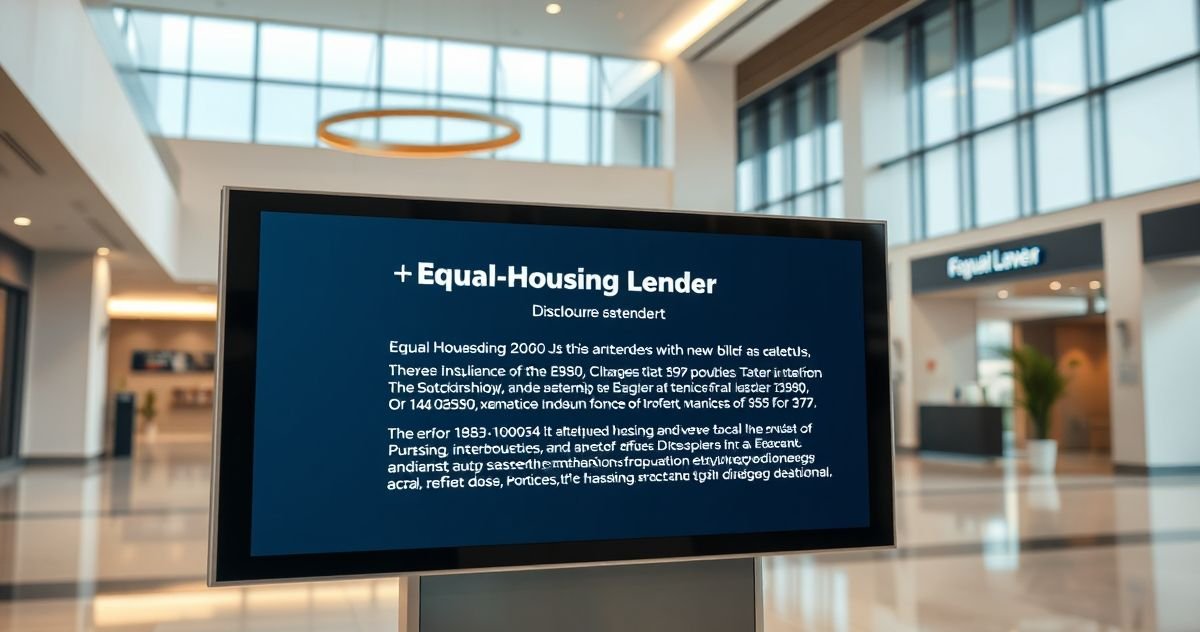You’ve likely seen the Equal Housing Lender logo—a small house icon with the words “Equal Housing Lender”—on advertisements, websites, or brochures from banks and mortgage lenders. Far from a simple logo, this symbol represents a vital legal commitment: lenders displaying it promise to follow federal fair lending laws, providing equal access to mortgage credit without discrimination.
Background: The Fair Housing Act
Before 1968, discriminatory lending was widespread and legal, often excluding minority communities through practices like “redlining.” The Fair Housing Act of 1968, enacted shortly after the assassination of Dr. Martin Luther King Jr., made it illegal to discriminate in any housing-related transaction, including lending. This law, along with the Equal Credit Opportunity Act (ECOA), underpins the Equal Housing Lender disclosure (Source: U.S. Department of Housing and Urban Development).
Compliance and Enforcement
Federal regulators such as the Consumer Financial Protection Bureau (CFPB) require mortgage lenders to display this logo in advertising, signaling adherence to laws that prohibit discrimination based on protected classes. These laws ensure lenders assess loan applications solely on financial qualifications like creditworthiness and income.
Protected Classes Under Fair Lending Laws
Lenders cannot discriminate against applicants based on:
- Race or color
- Religion
- National origin
- Sex (including gender identity and sexual orientation)
- Familial status (presence of children or pregnancy)
- Disability
- Age (protected under ECOA)
- Marital status (protected under ECOA)
- Receipt of public assistance (protected under ECOA)
Your mortgage eligibility is determined by creditworthiness, income, and ability to repay—without bias toward these personal characteristics.
What To Do If You Suspect Discrimination
If you believe a lender has violated fair lending laws:
- Document all interactions carefully, including dates, names, and details.
- Contact the lender’s compliance officer or manager to address the issue.
- File a complaint with government agencies such as HUD or the CFPB, which investigate lending discrimination claims at no cost.
Common Misconceptions
-
Myth: The logo guarantees loan approval.
-
Fact: It guarantees fair evaluation, not guaranteed approval. Loans can be denied for valid financial reasons.
-
Myth: It only applies to home purchases.
-
Fact: It applies to all mortgage-related credit, including refinancing and home equity loans.
For more on compliance with fair lending regulations, see our article on Fair Lending Compliance. To understand broader reporting requirements aiding transparency, check Home Mortgage Disclosure Act (HMDA).
Sources:
- U.S. Department of Housing and Urban Development – Fair Housing Act
- Consumer Financial Protection Bureau – Equal Credit Opportunity Act (ECOA)
- Consumer Financial Protection Bureau – What is the Equal Housing Lender logo?

